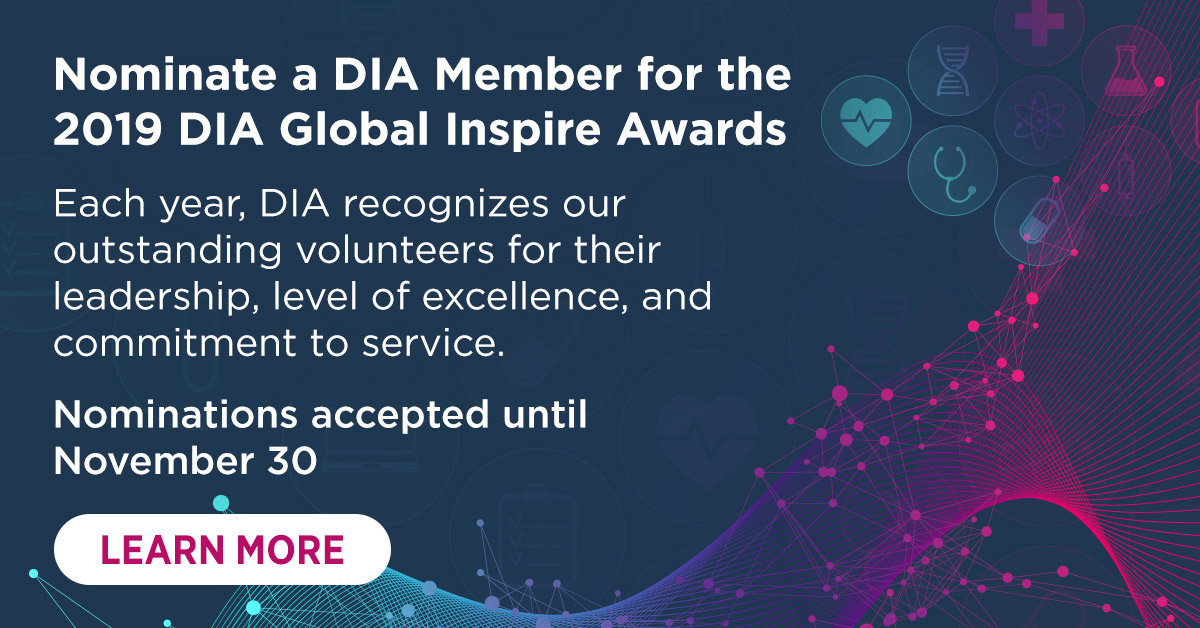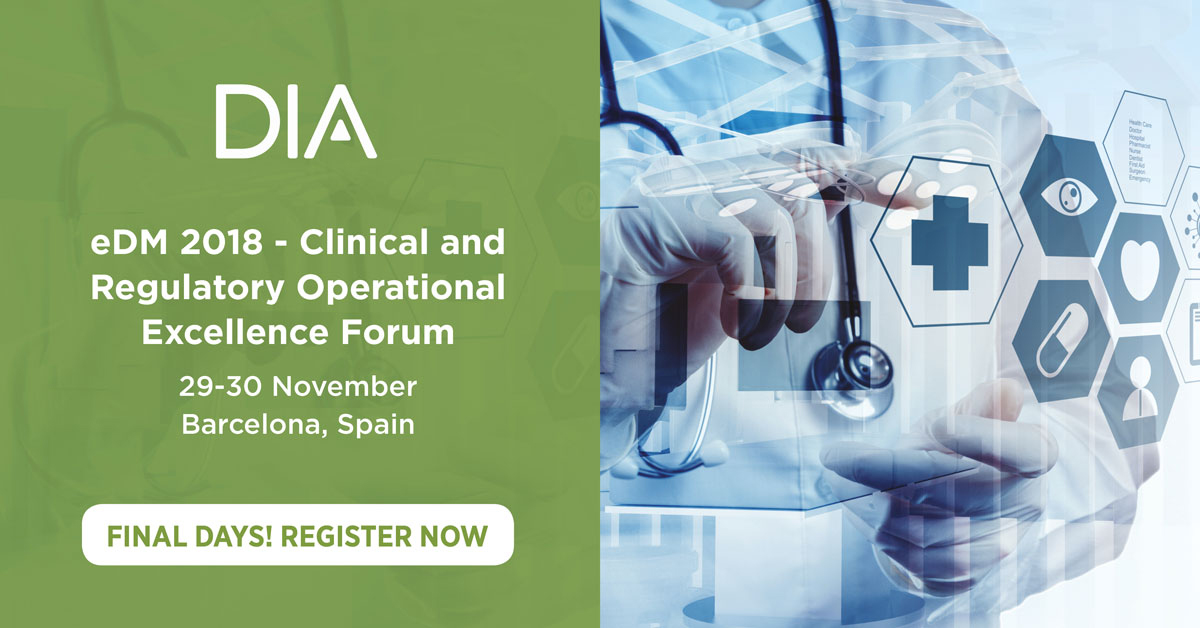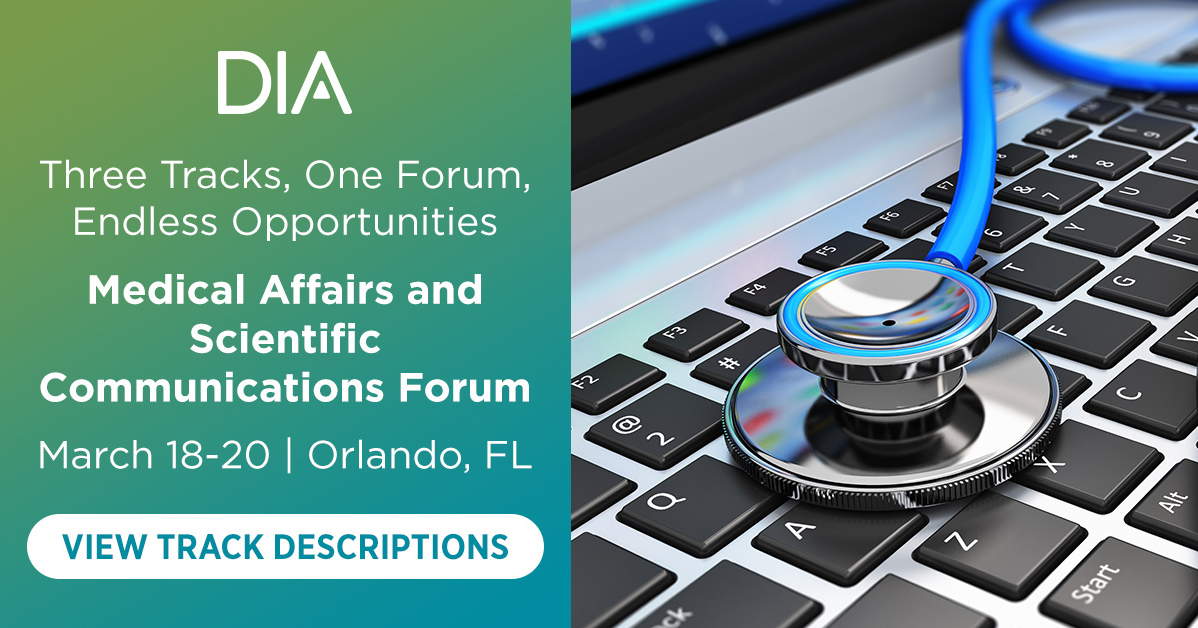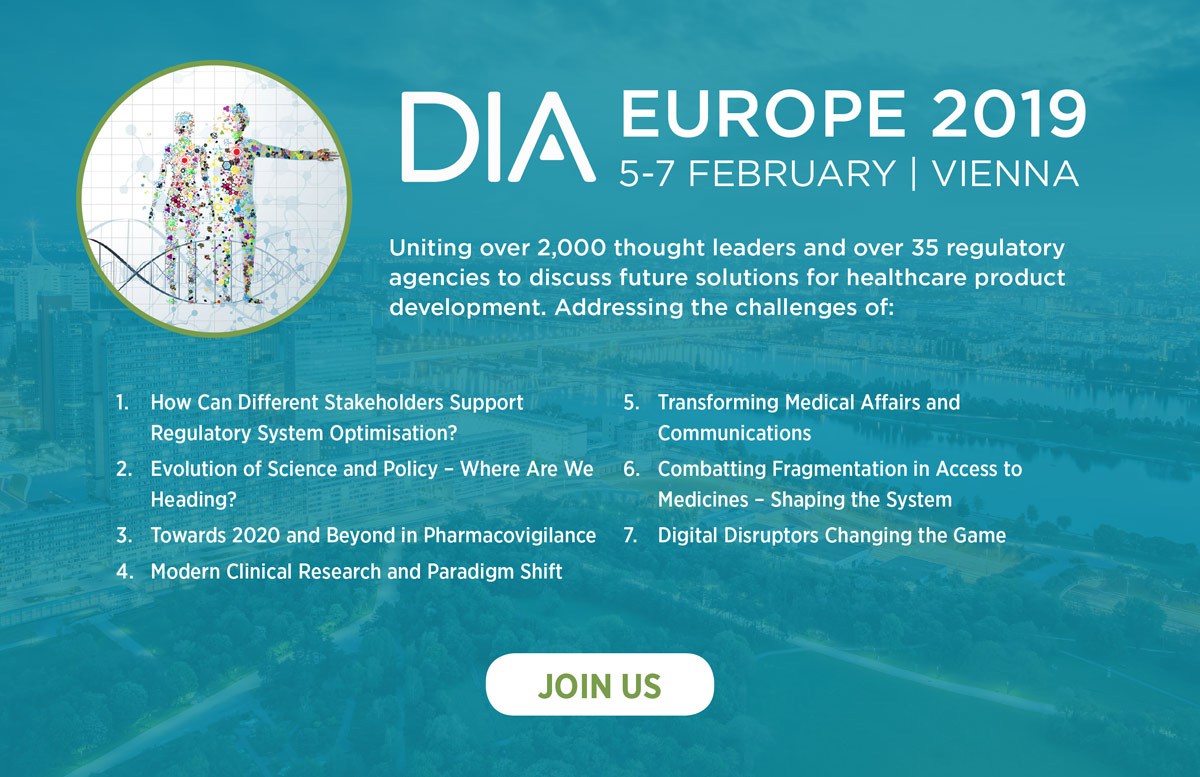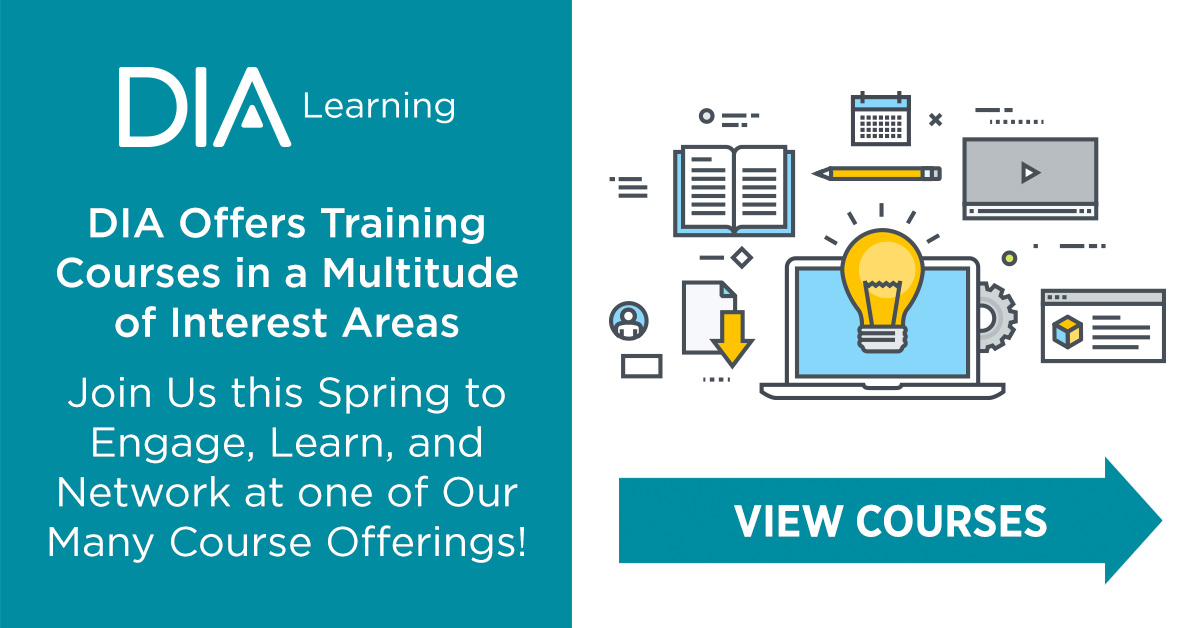November 2018 Global Forum
Table of Contents
A Necessary Tool for Communicating the Science of Clinical Trials
AROUND THE GLOBE
AROUND THE GLOBE CONTINUED
CAREER COLUMN
COMMUNITY REPORT
Diverse Topics Are on the Table for the Clinical Pharmacology (CP) Community
EXECUTIVE LEADERSHIP
Subscribe
Love Global Forum‘s new online format? Subscribe today and never miss an issue.
Executive Leadership | From the Editor-in-Chief
November 2018
Strategy With A Mouse Click
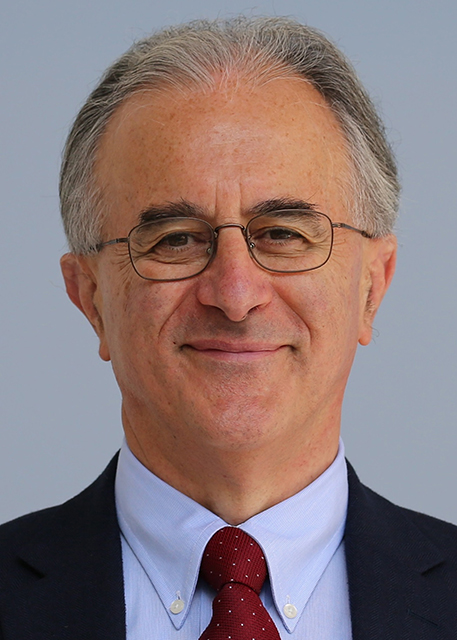
Alberto Grignolo
Editor-in-Chief
Global Forum
Fellow of DIA
hile attending a recent Roundtable on the growing potential of AI and machine learning applications in regulatory affairs, it occurred to me that we might soon be able to instruct a machine to generate a global regulatory strategy for a new drug, medical device, or cell/gene therapy in two minutes or less by clicking a mouse button. In fact, why not an entire product development and market access strategy?
Currently, this task requires dozens of experts in local regulations and harmonization, drug development, CMC, Pharm/Tox, Pharmacokinetics, Clinical, Market Intelligence, Pricing and Reimbursement, and much more. They labor for months to produce a document that can become obsolete in a disappointingly brief time due to ever-changing local circumstances and global dynamics.
Editorial Board
Content stream editors
Translational science
Gary Kelloff US National Institutes of Health
David Parkinson ESSA Pharma, Inc.
regulatory science
Yoshiaki Uyama Pharmaceuticals and Medical Devices Agency (PMDA)
Adora Ndu BioMarin Pharmaceutical, Inc.
Patient engagement
Deborah Collyar Patient Advocates In Research (PAIR)
Lode Dewulf Servier
Value & access
Edith Frénoy European Federation of Pharmaceutical Industries and Associations (EFPIA)
Sean Tunis Center for Medical Technology Policy (CMTP)
Editorial Staff
Alberto Grignolo, Editor-in-Chief PAREXEL International
Ranjini Prithviraj, Senior Managing Editor, Associate Director DIA Publications
Sandra Blumenrath, Science Writer DIA Publications
Chris M. Slawecki, Senior Digital Copyeditor DIA Publications
Regional Editors
AFRICA
David Mukanga Bill and Melinda Gates Foundation
ASEAN
Silke Vogel Duke-National University of Singapore Medical School
AUSTRALIA/NEW ZEALAND
Richard Day University of New South Wales, Medicine, St Vincent’s Hospital
CANADA
Judith Glennie JL Glennie Consulting, Inc.
Megan Bettle Health Canada
CENTRAL AND SOUTH AMERICA
Jaime Oliveira Bayer S/A
CHINA
Ling Su Shenyang Pharmaceutical University, Lilly Asia Ventures
EUROPE
John Lisman Lisman Legal Life Sciences
INDIA
J. Vijay Venkatraman Oviya MedSafe
JAPAN
Junichi Nishino Novartis
US
Ann Meeker-O’Connell IQVIA
DIA Membership
Bringing together stakeholders for the betterment of global health care.
Patients, Price, and Profit: Are Incentives in Balance for Orphan Drugs?
Adam Hutchings
Managing Director
Dolon Ltd.
are diseases represent one of the biggest areas of unmet health needs in developed countries. Of approximately 7,000 identified rare diseases—many of which are severe—only five percent have a licensed treatment available.
This great health need can only be met through a large and sustained investment in biopharmaceutical research for rare diseases. For this to happen, it requires a sustainable business model for orphan medicines that makes such research economically viable for biopharmaceutical companies and investors. What does that business model look like?
Real World Data: A Rich Resource for All Stages of Drug Development and Marketing
Senior Director
Senior Director
Vice President
Senior Vice President
eal world data (RWD) reflect the experience of individuals through their routine interactions with the healthcare system (claims data, electronic health records), or through data collected in surveys, registries, and more recently from sensors (“wearables”). RWD contain information on diagnoses, procedures, inpatient and outpatient episodes, laboratory and imaging examinations, prescriptions, costs, physical activity level (using sensors), or quality of life (using registries or surveys).
RWD have been utilized in clinical and epidemiologic research in the US and Europe for several decades, particularly to assess product safety. However, new information technologies and exponential growth in the volume of medical information collected in digital format have enabled rapid expansion of RWD use worldwide. In Asia, universal health insurance databases with complete capture of healthcare events for almost the entire country or region have become available for research in Japan, South Korea, and Taiwan during the past 10 years. The Pharmaceuticals and Medical Devices Agency (PMDA) of Japan has developed the Medical Information Net-Work (MID-NET) database of 23 hospitals’ electronic medical records for a real-time assessment of drug safety since 2011. While RWD can provide information to answer a broad range of questions that characterize product performance in large populations and healthcare systems, the credibility of the research depends on using the right study designs and analytical tools to analyze these large and complex datasets efficiently.
![]() Podcasts
Podcasts
Advanced Therapies Moving Upon Combination Platforms
Health Literacy:
A Necessary Tool for Communicating the Science
of Clinical Trials
Catina O’Leary
President and CEO
Health Literacy Media
Andrew Pleasant
Senior Director for Health Literacy and Research
Canyon Ranch Institute
Deborah Collyar
Founder and President
Patient Advocates in Research (PAIR)
ealth literacy is a powerful concept that successfully communicates the complex design, methods, processes, and outcomes of clinical trials to assure the information is understandable, relevant, and useful.
Key health literacy concepts include the following:
- Health literacy and plain language principles are based on related yet distinct ideas and approaches. The essential goal is to first “meet people where they are,” and then build up their knowledge and skills.
- There is no step in the process of designing, conducting, and reporting a clinical trial that cannot be improved by introducing health literacy principles.
- Science needs public engagement just as much as the public can benefit from a better understanding of scientific research.
Recent European Union (EU) regulations have drawn increased attention to the communication of scientific research, specifically clinical trials, around the world. Ethically, this is a welcome leap forward. Many wonder why this hasn’t always been the case. Clinical trial participants are foundational for study implementation and, like all key stakeholders, deserve to learn the outcomes of the studies in which they participate. In addition, clear and understandable information may also improve public support for science, create much-needed goodwill for sponsors of clinical trials and actually increase patient participation in the clinical trials themselves.
Tufts CSDD-DIA Survey to Assess the Artificial Intelligence Market
he Tufts Center for the Study of Drug Development, an independent, academic, non-profit research group within Tufts University School of Medicine, and DIA are conducting a study examining the application of artificial intelligence and machine learning to support drug development.
Pharmaceutical and biotechnology companies are piloting and adopting a wide variety of artificial intelligence initiatives across R&D functions, including drug discovery, clinical operations, regulatory, pharmacovigilance, and data management. The level of adoption also varies widely within and between companies.
We seek to understand whether healthcare product stakeholders are truly maximizing the application of digital tools to advance therapeutic development and access to medicines. Please help us shed light on this important topic by accessing the survey here.
Your responses will be strictly confidential and will only be reported as themes in the aggregate. To thank you for your participation, we will send you the summary report of the study findings. Thank you for participating in this important research effort!


Around The Globe
In Progress: Regulatory Convergence of Advanced Therapies in the Asia-Pacific
Silke Vogel
Senior Associate Dean
Graduate Studies
Deputy Director
Hozanna Ngoh
Medical Writer
Duke-NUS Medical School, Singapore
dvanced therapies – which include cell, tissue and gene therapies – are at the forefront of biomedical innovation with prominent advances in the scientific, technological and regulatory domains. In August 2017, the first chimeric antigen receptor T-cell (CAR-T cell) therapy was approved for the US market for targeted cancer immunotherapy, and CAR-T cell therapy developers have recently gained entry into the European market as well. On other fronts, the discovery and utility of the CRISPR-Cas9 genome-editing tool has uncovered new potential for more precise gene therapies.
Advanced Therapies in Asia-Pacific
In Asia-Pacific, the regulatory environment is heterogeneous, with varying levels of maturity and capacity across the national healthcare and healthcare products regulatory systems. Not unexpectedly, regulatory oversight of advanced therapies reflects this heterogeneity. Countries such as Japan and Korea have established specific regulatory processes for advanced therapy products—or “regenerative medicine”—and have approved a number of such products in their respective markets.
Around The Globe
Finally Time for Real World Evidence in Canada?
Judith Glennie
President
JL Glennie Consulting, Inc.
anada has a long history of developing the requisite infrastructure and research expertise to collect and assess administrative data and other real world insights. Processes for using this information have often been laborious and, thus, application has frequently been limited to decision making at the provincial and/or federal government level.
However, we’ve seen significant evolution of technology, systems, tools, standards, and methodologies related to real world evidence (RWE) generation over the past several years. In addition, regulators around the world are giving very serious consideration to the use of RWE to inform their decisions. It is important that all key players in the Canadian pharmaceutical system align to these developments, to ensure timely patient access to medications that is consistent with other jurisdictions.
Around The Globe
50 + Percent Discount on Innovative Cancer Drugs
China’s Reimbursement List
Minhua Chu
Intern, DIA
hina is improving the accessibility of innovative drugs, especially expensive anti-cancer drugs. On October 10, China’s State Medical Insurance Administration (SMIA) announced the results of the new round of negotiations: 17 anti-cancer drugs (see below) were included in the country’s National Reimbursement Drug List (NRDL) with discounts averaging 56.7 percent. Ten of these were launched in China in 2017, including two from domestic manufacturers.
Around The Globe
EMA Scales Back, MHRA Loses European Work as Brexit Rolls On
John Lisman
Principal
Lisman Legal Life sciences
Brexit
hese days, tension rises to the highest level for everyone dealing with the pharmaceutical market in the European region: How hard or soft will the Brexit deal be? Brexit is rapidly approaching. The EU membership of the UK will end on 29 March 2019, less than six months from now. By the time you read this, a decision about the nature of the Brexit may have been taken: Will the UK, at least for medical products, remain in the single market or will they seek another type of future relationship with the EU as a third county?
The government of Theresa May has proposed the so-called Chequers deal in the Brexit White Paper. This is considered a ”soft Brexit,” because it suggests staying in the single market. Furthermore, the UK would remain bound by EU product legislation (in this case, the pharmaceutical and medical products legislation) via a common rulebook. For highly regulated products, the UK would continue participation in the EU agencies like the EMA for medicinal products and medical devices. It is not likely that the UK Government position will be adopted. EU partners do not agree with this “cherry picking:” If you want to stay in the single market, you also must support the other freedoms underpinning the EU; e.g., free movement of persons, services, and capital. The governmental proposals also face domestic challenges, because many want either not to leave the EU at all or to have a “hard Brexit,” including a separate new trade agreement between the UK and the EU.
Community Spotlight
From First-In-Human to Human Abuse Potential:
Diverse Topics Are on the Table for the Clinical Pharmacology (CP) Community
Beatrice Setnik
CP Community Chair
Vice President
Scientific and Clinical Strategy, Early Phase
Syneos Health
he CP Community is devoted to helping clinical pharmacologists and other early phase clinicians and scientists to collaborate more effectively. It provides educational opportunities in multiple formats to enhance understanding of the complexities of Clinical Pharmacology as it applies to the diverse disciplines involved in the entire life-cycle of product development, and especially early development and translational research. Our core group meets quarterly to ensure timely discussion of topics at upcoming DIA meetings related to the progressive field of clinical pharmacology.
Our objectives are to:
- provide a dynamic forum to discuss relevant topics in clinical pharmacology through the sharing of knowledge, expertise, and experience;
- exchange information and discuss current issues related to national and international regulatory guidances, as they apply to clinical trial methodology;
- support educational exchanges at the DIA by delivering workshops, symposia and other forums focused on topics related to clinical pharmacology;
- publish position papers on current issues, new regulations, emerging trends, and technology evolution; and
- influence the regulatory environment as it pertains to clinical trial methods in all phases of drug development.
We Are DIA
Impactful Job Interviews: Prepare!
Priya Patel
Post-Doctoral Fellow
Pfizer, Inc.
Adjunct Faculty
Rutgers University
fter months or even years of strenuous and diligent work, you are finally granted a job interview for a position at a coveted company. You take a moment to celebrate and reflect on your journey – the hard work, long hours, unexpected hurdles, missed opportunities, and sleepless nights. You now have one chance to make a positive and impactful first impression, and suddenly, feelings of joy and pride are replaced by fear and trepidation. You ask yourself, “How can I impress the interviewers in a short amount of time?”
My interview experience for a post-doctoral pharmacy fellowship was similar. I was invited for an on-site interview at a pharmaceutical company that I had only dreamed of working for. When the call came to invite me, I was elated, grinning from ear to ear, and overcome with gratitude. I tried to hide the extreme excitement for which I am known. But after hanging up the phone, I realized I would have to condense four years of experience into a 30-minute (or less) interview that also allowed adequate time to ask and answer questions. I discussed these concerns with an advisor who shared these helpful tips on how to effectively prepare for a job interview.

Thanks for reading our November 2018 Issue!



